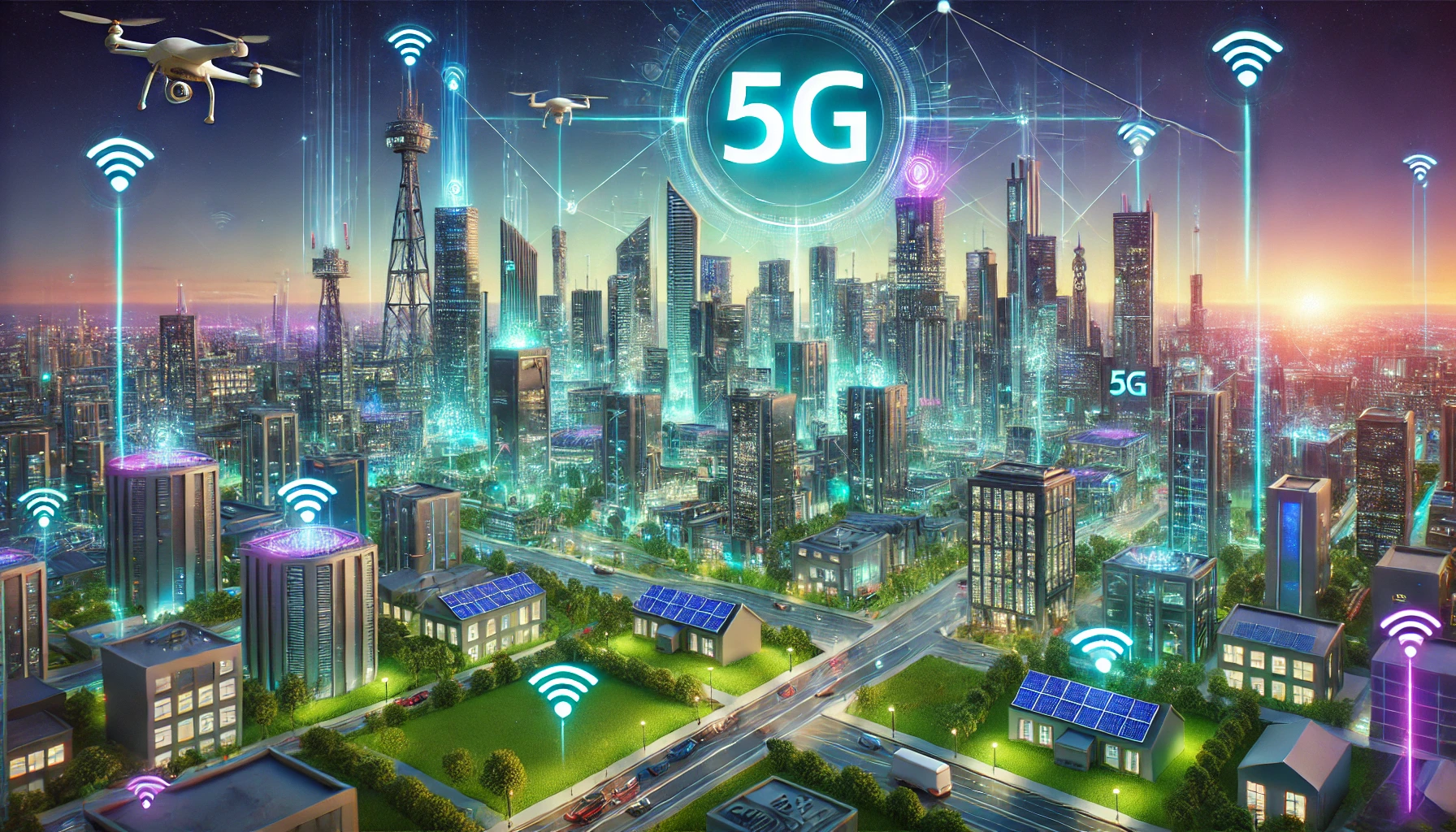The Future of Smart Cities Powered by 5G
 Yoshi Sharma
Yoshi Sharma
As urban populations grow, cities around the world are striving to become smarter, more efficient, and sustainable. Central to this transformation is the adoption of advanced technologies, with 5G playing a critical role in powering the future of smart cities. By enabling faster communication, low-latency, and greater connectivity, 5G is not just an upgrade from 4G—it's the foundation that will support the increasingly complex networks of devices, services, and systems needed in modern urban environments.
1. Enhanced Connectivity for IoT
Smart cities rely on the Internet of Things (IoT) to interconnect devices such as sensors, cameras, and vehicles. These devices collect and transmit vast amounts of data, which is essential for everything from traffic management to public safety. With 5G, the ability to handle more devices in a smaller area is greatly enhanced, supporting the large-scale deployment of IoT technologies. This allows for real-time monitoring and decision-making, improving urban services and creating a seamless flow of information.
Examples:
Smart Traffic Lights: Sensors connected via 5G can adjust traffic signals based on real-time conditions, reducing congestion and improving flow.
Waste Management: IoT-enabled waste bins can alert city officials when they need to be emptied, optimizing collection routes and reducing unnecessary fuel consumption.
2. Smart Mobility and Autonomous Vehicles
5G’s low latency—meaning faster response times—will be a key enabler for autonomous vehicles and smart transportation systems. Autonomous cars, buses, and drones will require instantaneous communication with each other and the city’s infrastructure to ensure safe and efficient movement through urban areas.
With 5G, the concept of vehicle-to-everything (V2X) communication can become a reality, where vehicles interact not only with each other but also with traffic signals, pedestrian crossings, and parking infrastructure. This improves road safety, minimizes traffic jams, and reduces emissions.
Examples:
Autonomous Public Transport: Buses and trains could operate without human drivers, responding dynamically to traffic patterns or rerouting based on real-time data.
Smart Parking: 5G-enabled parking sensors could guide drivers to the nearest available parking spots, reducing the time spent looking for parking and the associated pollution.
3. Smart Energy Management
Efficient energy management is a core component of any smart city, and 5G will be integral to monitoring and optimizing energy usage in real-time. Smart grids will use data to manage electricity distribution more efficiently, responding to demand, integrating renewable energy sources, and reducing energy waste.
In smart cities, buildings equipped with IoT sensors can manage heating, lighting, and air conditioning systems based on real-time occupancy and usage data. By reducing energy consumption during off-peak times or in unused spaces, cities can achieve significant energy savings and lower carbon footprints.
Examples:
Smart Buildings: 5G enables building management systems to dynamically control energy use, ensuring optimal performance while reducing costs.
Renewable Energy Integration: 5G allows for the seamless integration of solar panels and wind turbines into the grid, ensuring that renewable energy is used efficiently.
4. Public Safety and Emergency Services
In smart cities, 5G can revolutionize public safety by improving the speed and efficiency of emergency response. Real-time surveillance systems, connected through 5G, can quickly detect criminal activity or accidents, immediately alerting law enforcement and emergency services. Drones equipped with cameras can provide live feeds during emergencies, allowing for faster and more informed responses.
5G also supports smart health monitoring systems, where citizens wearing connected devices can automatically transmit health data to emergency services, allowing for rapid response to critical situations like heart attacks or strokes.
Examples:
Disaster Management: Drones and real-time sensors can assess damage from natural disasters like earthquakes or floods, guiding rescue teams to areas most in need.
Real-Time Surveillance: Cameras and drones can monitor public spaces, helping law enforcement detect and respond to crimes in progress.
5. Boosting Economic Growth and Innovation
The introduction of 5G will also foster innovation in industries such as manufacturing, healthcare, and logistics. Companies will have the ability to develop new services that rely on fast, stable connectivity, giving rise to a more robust urban economy. For instance, telemedicine services powered by 5G can bring quality healthcare to underserved communities, while augmented and virtual reality technologies can be applied in fields such as education and training.
As a result, cities that adopt 5G early will be well-positioned to attract businesses and investors looking to capitalize on the next wave of technological innovation. This can lead to job creation, improved services, and a higher quality of life for citizens.
Examples:
Telemedicine: Real-time, high-definition video consultations between doctors and patients, even in remote areas.
Augmented Reality (AR): Real-time AR applications for education, training, and tourism, providing immersive experiences for residents and visitors.
Conclusion
The role of 5G in smart cities goes beyond faster internet speeds; it represents a foundational shift that will enable cities to become more connected, efficient, and sustainable. From smart transportation and energy management to enhanced public safety and economic innovation, 5G will drive the next wave of urban development, making cities more livable, competitive, and resilient in the face of future challenges.
Subscribe to my newsletter
Read articles from Yoshi Sharma directly inside your inbox. Subscribe to the newsletter, and don't miss out.
Written by
